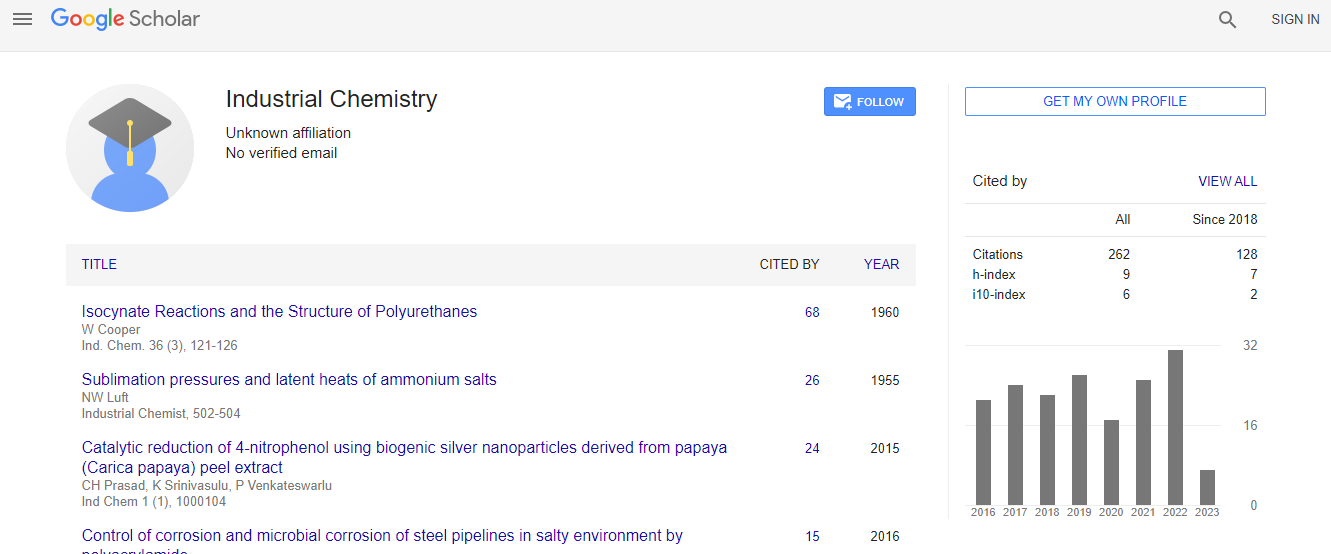Our Group organises 3000+ Global Conferenceseries Events every year across USA, Europe & Asia with support from 1000 more scientific Societies and Publishes 700+ Open Access Journals which contains over 50000 eminent personalities, reputed scientists as editorial board members.
Open Access Journals gaining more Readers and Citations
700 Journals and 15,000,000 Readers Each Journal is getting 25,000+ Readers
Google Scholar citation report
Citations : 262
Industrial Chemistry received 262 citations as per Google Scholar report
Indexed In
- Index Copernicus
- Google Scholar
- RefSeek
- Directory of Research Journal Indexing (DRJI)
- Hamdard University
- EBSCO A-Z
- OCLC- WorldCat
- Scholarsteer
- Geneva Foundation for Medical Education and Research
- Euro Pub
Useful Links
Recommended Journals
Related Subjects
Share This Page
D-TiO2/ZnO-degradation of contaminants present in residual water using TiO2/ZnO catalysts
17th International Conference on Industrial Chemistry and Water Treatment
Berenice Angel Hernandez
Benemerita Autonomous University of Puebla, Mexico
Posters & Accepted Abstracts: Ind Chem
Abstract
Degradation of contaminants present in residual water using TiO2/ZnO catalysts (D-TiO2/ZnO): It is an experimental work which aims to degrade the contaminants present in the water from a municipal wastewater treatment plant. This objective is achieved through the use of UV radiation and TiO2/ZnO catalysts. The catalysts used were synthesized using the sol-gel method. The sol-gel method was chosen for the synthesis because this method achieves a high homogeneity and purity of the materials besides presenting a great thermal stability. Once the catalysts were obtained their characterization was carried out by the methods of X-ray diffraction, scanning electron microscopy and energy dispersive spectroscopy. Degradation tests are carried out on the wastewater with the catalysts and an 850mL batch photoreactor composed of a medium pressure mercury vapor lamp which emits ultraviolet radiation with a region between 200-400nm. To follow up the photodegradation, samples were taken and analyzed in a UV spectrophotometer. Physico-chemical, microbiological and genotoxicity analyzes are carried out before and after photodegradation to compare the results and verify that the degradation has been successful. The results of the tests showed an evident decrease in the color, turbidity, solids, heavy metals, chemical oxygen demand and biological demand of oxygen present in the residual water sample.Biography
Berenice Angel Hernandez is currently pursuing her Master's degree in Benemerita Autonomous University of Puebla, Mexico. She has published one paper and realized a stay of investigation in the PSA, Spain.
Email:berenice.angel.hdz@gmail.com

 Spanish
Spanish  Chinese
Chinese  Russian
Russian  German
German  French
French  Japanese
Japanese  Portuguese
Portuguese  Hindi
Hindi 